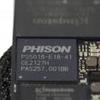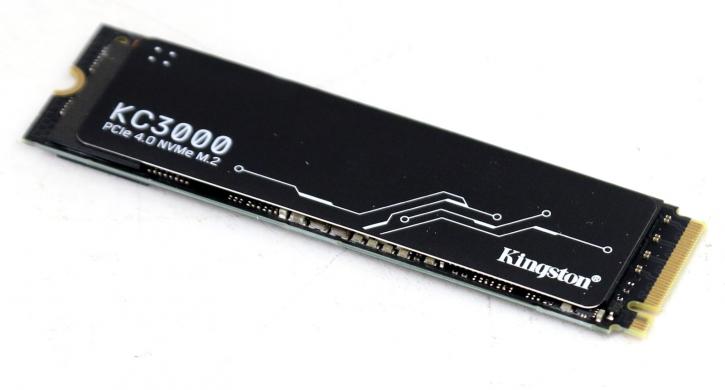Introduction
Kingston KC3000 | PCIe 4.0 NVMe SSD
Danger Will Robinson: we're breaching 7000 MB/sec
Let me introduce you to Kingston's most prodigious KC3000 NVMe SSD, the PCIe Gen 4.0 SSD is one of the fastest NVMe SSDs we have tested so far, with a transfer rate of 7000 MB/sec. Not only does it look very attractive, but it also functions swift and fast. It has performance levels passing 7 GB/sec. Kingston introduced the KC3000 as a fresh new solid-state drive with a capacity starting at 512GB up-to 4TB. It's an NVMe M.2 SSD that supports PCI Express 4.0. Kingston's Phison E18-based flagship NVMe SSD offering is a completely different animal from the rest of the Phison E18-based SSDs that are currently available on the market today. See, Kingston is using premium 1600 MT speed Micron 176L NAND (B47R) for the KC3000, which are cut, stacked, and packed entirely in-house.
Kingston claims read and write rates of 7GB/s and 7GB/s, respectively, for the 2TB and 4TB variants, according to their specifications. Random 4K performance is said to be up to 1 million IOPS for both reads and writes. These are the exact statistics that the Phison E18 controller indicates is its maximum performance. The 2 TB version that was tested costs 20 cents per gigabyte (GB). There is a twist in this round, though, as the storage unit is based on TLC NAND technology (this round from Micron). The new NVMe M.2 SSD has PCI-Express 4.0 (x4) connectivity, which is faster than last gen models. The capacity lineup consists of three models with differing capacities: 1TB, 2TB, and 4TB. As well as being capable of sequential reading and writing speeds of up to 7,000 megabytes per second (MB/s), as well as random reading and writing speeds of up to 6,800 megabytes per second, 3D TLC NAND also has random reading and writing capabilities of up to 1.000,000 IOPS and PCI-Express 4.0 support for high-speed versions of the technology. SSDs of the highest potential level of performance (X4) When random access is used, the processing speed is extremely high. The product is also fitted with a large heat sink, which allows for even greater optimization of cooling performance.
In addition to providing exceptional performance and long-term durability, the SSD is made with high-density 3D TLC NAND, which provides up to 3,200 TB Written for the 4TB model and 1600 TBW for the tested 2 TB model, respectively. A projected mean time between failure (MTBF) of 1.6 million hours is predicted for the product, which is covered by a five-year warranty.
The following is a quick rundown of the new SKU (product code) numbers and prices.
Kingston's KC3000 boasts the fastest hardware configuration we've seen from a Phison-based drives to date, according to our tests. The KC3000 is a powerful SSD uses Phison's PS5018-E18 PCIe 4.0 x4 NVMe controller and Micron's 176L TLC NAND flash, which can operate at 1,600 MTps at full speed, respectively. The mapping tables for the SSD are stored in 1 GB of storage provided by DRAM chips. A non-volatile memory express (NVMe 1.4) capable M.2 form factor SSD, it is packed with unique Vertically stacked TLC written (3-bits per cell) NAND. In today's world, the performance numbers provided by a quality SATA3 SSD are still outstanding. However, with the more specialized NVMe SSDs, you can easily triple times two performance, resulting in some truly impressive numbers across the board. With an M.2 2280 form factor of 8cm, the item will be compatible with the vast majority of ATX motherboards that support M.2. In any case, are you interested in learning more about the fundamental performance of this product? Well, it's all listed; on to the next pages and the remainder of the review.


